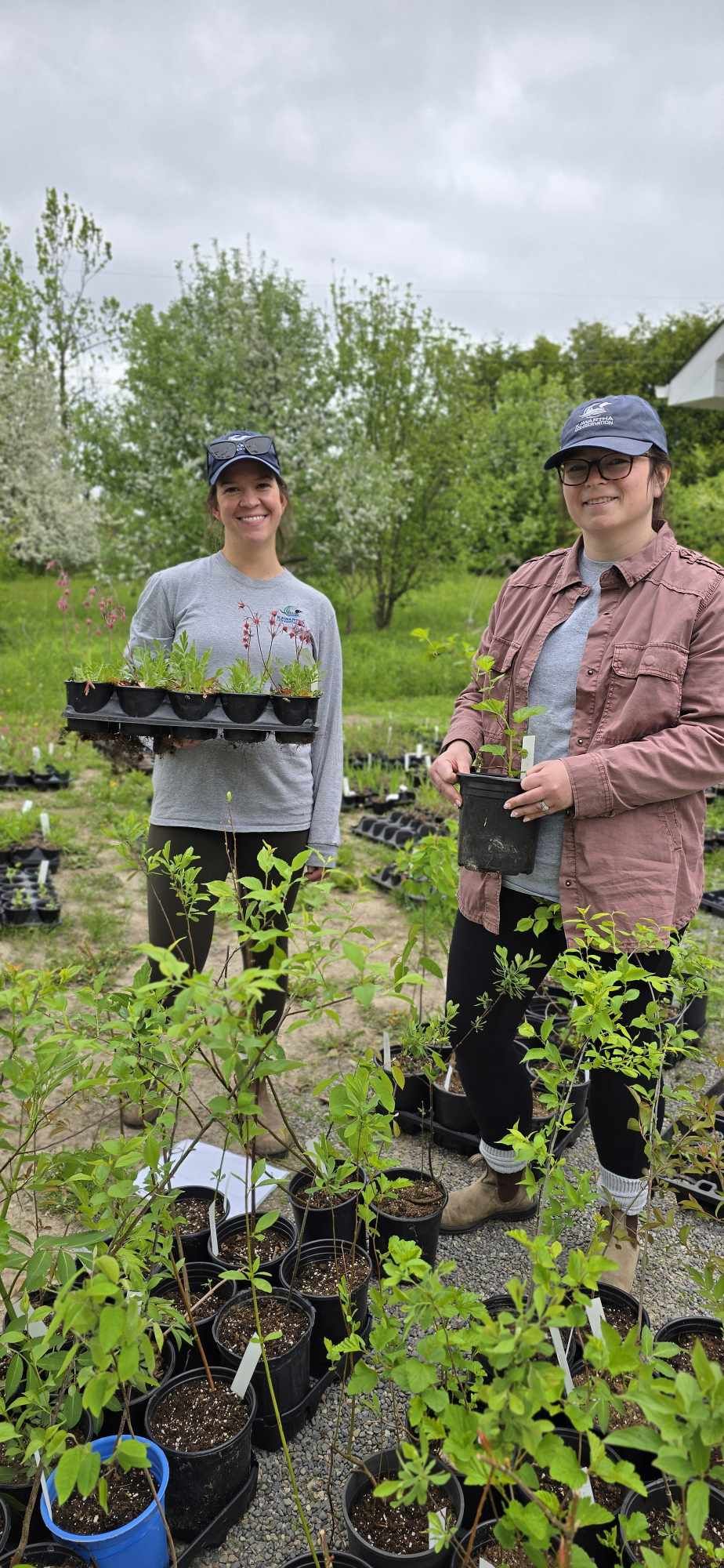Small Wings, Big Impact: Supporting Pollinators Across the Kawartha Watershed

As bees hum through blooming meadows and butterflies trace lazy circles above the water, it's easy to forget that pollinators are doing essential work. Across the Kawartha watershed, these small but mighty species - bees, butterflies, hummingbirds, and even certain beetles - are quietly sustaining ecosystems, supporting food systems, and maintaining biodiversity. And ahead of National Pollinator Week (June 17–23), Kawartha Conservation is highlighting the many ways individuals and landowners can help protect them.
“For us, supporting pollinators is about more than planting a few flowers,” said Danielle Marcoux-Hunter, Landowner and Community Specialist at Kawartha Conservation. “It’s about helping people connect the dots between their actions and the health of the environment around them.”
That connection starts at ground level. While Kawartha Conservation’s annual Native Plant Sale closed in May, the organization continues to promote long-term pollinator support through free, easy-to-use Healthy Garden Guides - available both online and as printed booklets at the Kawartha Conservation administrative building at Ken Reid Conservation Area.
“These guides walk you through designing garden spaces that are good for pollinators, water quality, and biodiversity,” said Marcoux-Hunter. “They’re practical tools for anyone who wants to make their yard or waterfront more environmentally friendly.”
The guides offer plant suggestions tailored to specific conditions - like dry soil, shady areas, or waterfront slopes - and provide maintenance tips to ensure your garden thrives year after year. One of the most popular options is the Native Plant Pollinator Garden Guide, which helps landowners create vibrant nectar corridors using native wildflowers.
“People sometimes think they need a big property or years of experience to make a difference,” said Marcoux-Hunter. “But a small garden with the right native plants can support hundreds of pollinators throughout the season. You don’t have to be an expert - you just have to start.”
Pollinators in the Fields
While gardens and shorelines play a critical role, pollinators also depend on healthy agricultural landscapes. That’s why Kawartha Conservation is working directly with local farmers to integrate pollinator-friendly practices into their land management.
“Farms can be incredible places for pollinators when managed with diversity in mind,” said Joshua Noiseux, Agricultural Stewardship Technician. “We support producers in implementing Best Management Practices that improve both farm resilience and pollinator habitat.”
These practices include planting cover crops, maintaining flowering field edges, restoring hedgerows, and reducing or carefully timing pesticide use. Riparian buffers along creeks and ditches - planted with native grasses and shrubs - not only filter runoff and improve water quality but also serve as important travel corridors for bees and butterflies.
“Pollinators are essential to many crops, and their decline has a real economic impact,” Noiseux added. “By building habitat into the farm operation, producers can actually increase pollination rates and support yields over the long term.”
Kawartha Conservation offers free consultations, technical advice, and funding opportunities through the Water Fund to help farmers adopt these practices.
“We’re not asking farmers to overhaul their operations,” said Noiseux. “We’re helping them take targeted actions that benefit both their business and the broader watershed.”
A Watershed Approach to Pollinator Protection
Pollinators are a shared responsibility, and supporting them means thinking across fences, property lines, and land uses. Whether it’s planting native milkweed in a backyard garden, restoring a natural shoreline, or enhancing a marginal piece of farmland with a pollinator strip, every action adds up.
“Pollinators don’t see boundaries - they just need food, shelter, and safe passage,” said Marcoux-Hunter. “That’s why it’s so important that we work together across the watershed.”
With climate change, habitat loss, and pesticide exposure putting pressure on pollinator populations, conservation efforts need to be proactive, connected, and community-driven.
“There’s a lot of urgency, but there’s also a lot of opportunity,” added Marcoux-Hunter. “Pollinator Week is a great time to take stock of what we’re doing right - and what more we can do to support these species that are so vital to life in the Kawarthas.”
For residents interested in learning more or picking up a copy of the Healthy Garden Guides, visit kawarthaconservation.com/healthygardens or stop by the Ken Reid Conservation Area administration office.
Contact Us
Kawartha Conservation
277 Kenrei Road
Lindsay, ON K9V 4R1
Tel: 705.328.2271
Fax: 705.328.2286
Subscribe to Receive Updates and Notifications
Stay up to date on flood and low water, news, activities, events, programs and operations by subscribing to updates and the Watershed Watch Newsletter.
